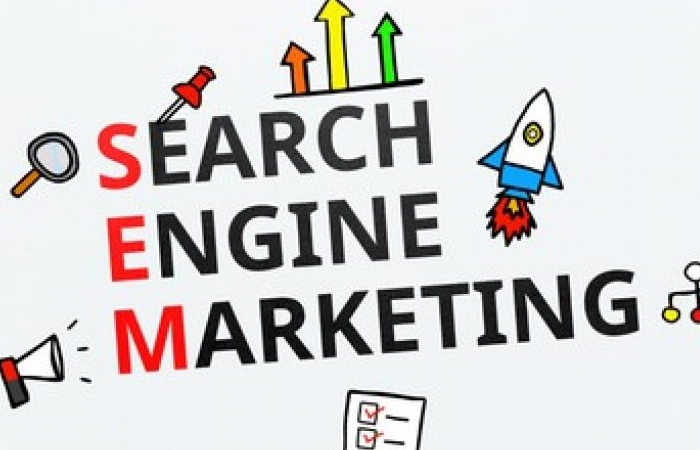Table of Contents
Search Engine Marketing – Introduction
Search Engine Marketing (SEM) is also virtual or Internet marketing. It is the marketing and advertising strategy in digital media. The leading search engines implementing SEM are Bing, Yahoo and Google.
Search engine marketing (SEM) is closely related to SEO (Search Engine Optimization) or positioning a web page at the top of search engines. It is achieved by following the rules of search engine algorithms, such as optimization of the structure of the web page, use of keywords or frequently updated content.
Why is Search Engine Marketing Important?
Along with SEO, SEM helps your business rank at the top of search results on Google, Bing, and other search engines. The first page of search results gets more than 71% of all clicks.
Search engine marketing is becoming increasingly significant as a traffic generation channel. While click-through rates from organic search results have fallen 13% in the first quarter of 2019, SEM soared 75% in the same period.
Better yet, audiences are loyal to SEM. 75% of people said paid search ads help them find the information they’re looking for, and more than 30% clicked on a paid search ad because it directly answered their search query.
This data shows that search engine marketing is an excellent source of traffic and a customer acquisition channel. Read on to learn how your business can benefit from SEM.
Benefits of Search Engine Marketing (SEM)
It’s tempting to neglect paid search activities and invest in other marketing channels. However, SEM has tangible advantages.
1. Higher Conversion Rates
By using keywords, search engine marketing only captures customers who are potentially interested in your proposition. For example, half of the audience coming to a retailer’s website through paid ads are likely to make a purchase compared to those coming from an organic link.
2. Better Brand Recognition
SEM doesn’t just convert audiences who already know your brand; it can also increase brand awareness by up to 80%. When people search for something and see ads, they may not click on it, but they may still recognize the product, brand, or URL.
3. Immediate Results
While getting your website to the top of organic search results often takes months, paid ads appear at the top and deliver results immediately. They help you reach your target audience instantly.
4. Constant Traffic
As your SEM campaigns run, they drive additional traffic to your website. According to Google, 89% of this traffic is not replaced by organic clicks when ads are paused. This number is consistently high across different industries, such as automotive, health, or travel. In a nutshell, SEM always generates sustainable traffic during your ad campaigns.
With all these benefits, search engine marketing seems too attractive to leave on the table. So now it’s time to find out how SEM works.
Types of Search Engine Marketing
It is the point where the meaning of the term “search engine marketing” becomes a question again. Referring to SEM as a lot of ways of search promotion, we can divide it into organic search (SEO) activities, paid activities, and local search, or marketing your business locally.
Since SEM is only paid activities, it is possible to talk about the different types of ads used by search engines. Let’s analyze the classes offered by the most popular platform, Google Ads, to its users. Here are some of them:
1. Text Ads
This type is the most popular and the easiest to make. Text ads include headlines, body text, and links to your website. Depending on the cost of the ad and also the search engine, they may appear above, to the right of, or below the organic listings.
2.Google Shopping Ads
This type of ad is based on the same principles of keyword use as the previous one. The difference is the visual part Google shopping ads include images and prices. This format is perfect for selling products.
3. Responsive Ads
This format is reduced to allowing Google to automatically adapt your ads to the behaviour patterns of different search engines. You must write several titles and descriptions for your campaign; the ad platform will test all possible combinations and also show search engines the best-performing ads.
4. Local Service Ads
This option was made for local businesses, such as coffee shops, plumbers, real estate agents, etc. Local service ads allow you to advertise only in a particular area and receive leads directly from potential customers.
Although we only list Google ad types, other search engines use similar formats. For example, with Bing, you can find ads analogous to Google’s text and shopping ads.
How to Use Search Engine Marketing
Launching a complicated new marketing channel from scratch can be tricky. Hence to make your SEM experience smoother, follow this list of essential steps.
1. Create a Strategy
Start by setting short-term and long-term goals for your SEM and aligning them with your business needs. For example, decide how many new customers you need to acquire to achieve this result if you want to earn more revenue. Next, define the amount of traffic you need and also your budget. It will help you understand which campaigns and how often you should use them to reach your goals.
2. Compile a List of Keywords
Before launching a paid campaign, generate a list of keywords associated with your business. You can copy keywords from competitors, develop them with online tools like Google Keyword Planner, or brainstorm with your colleagues. You can use more specific or general keywords and also combinations of both. The primary rule here is to only search for relevant words.
3. Add Organic Search Promotion
Organic and paid search engine promotion activities work best together. Produced correctly, they reinforce each other and give better results. Therefore, remember to add or adapt SEO to your SEM. To start search engine optimization from scratch, follow the advice in our guide on how to build an SEO strategy.
4. Experiment With Different Types Of Ads
Different types of ads can be more or less effective for certain businesses. Try various ad formats, such as text ads or commercials, to find the best option for you. Try different ad platforms; Chances are, underrated paid listings with Yahoo will be more effective for you than popular Google ads.
5. Review Your Campaign Regularly
Remember to track your results to assess the effectiveness of your search engine marketing campaigns. Review them once or twice weekly so you can make changes in case something goes wrong. Record all data and also look for trends.
These basic rules will help you implement and maintain search engine marketing. However, to take your SEM to a higher level, you will need to implement advanced strategies.
Conclusion
Search engine marketing (SEM) is a kind of marketing aimed at promoting a website on search engine results pages. By ensuring your website ranks high in search results, SEM will help you generate more traffic and gain more customers.

